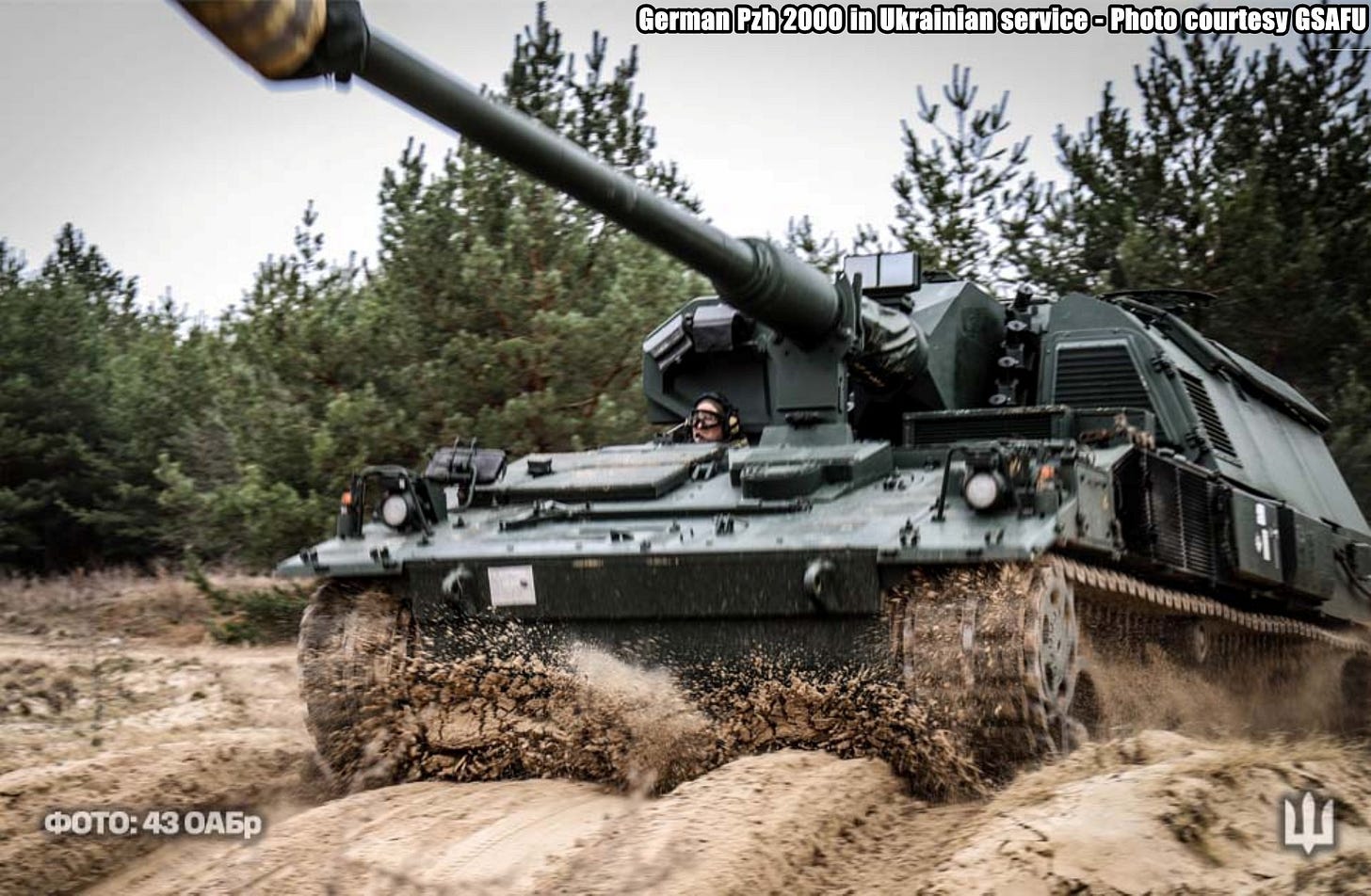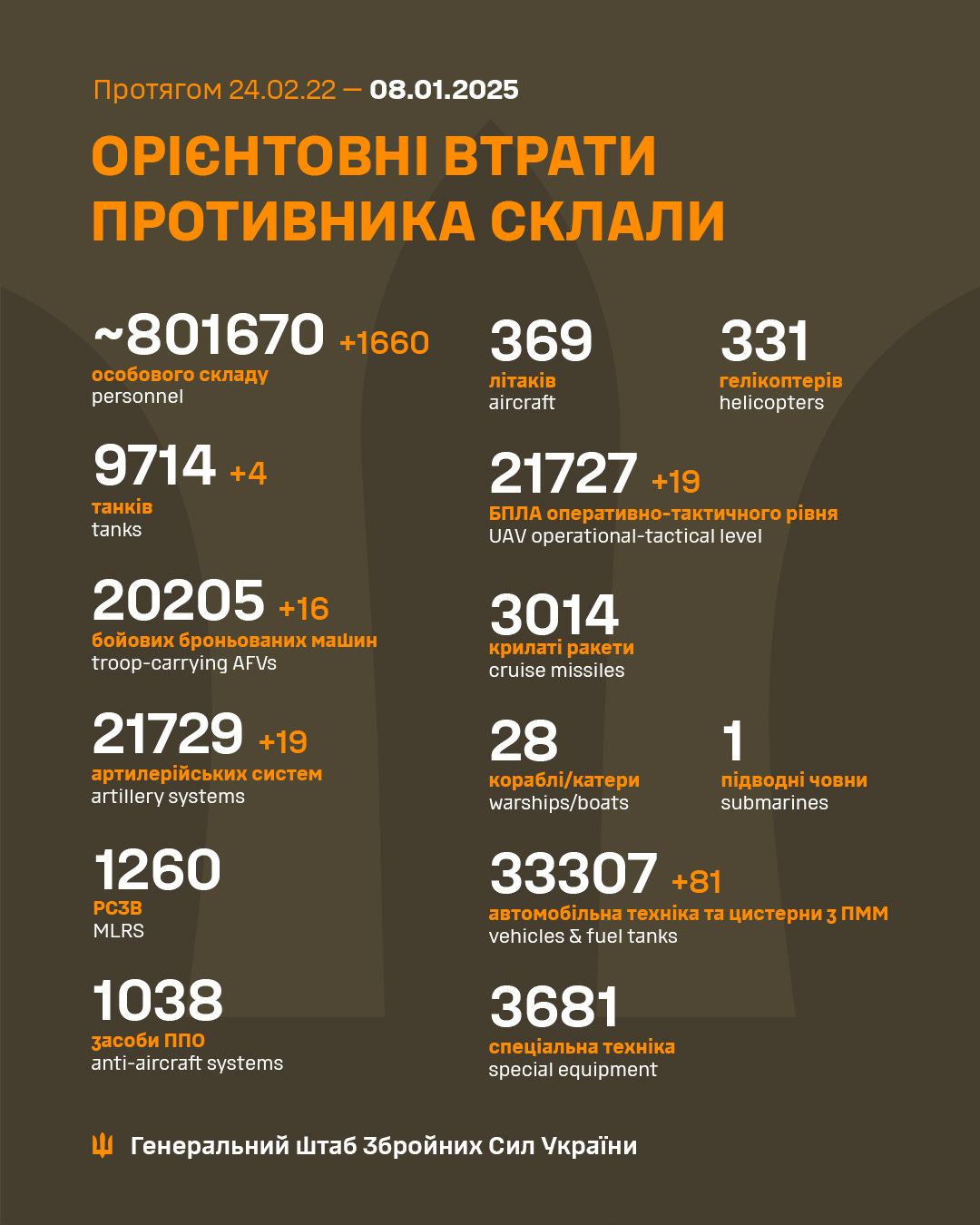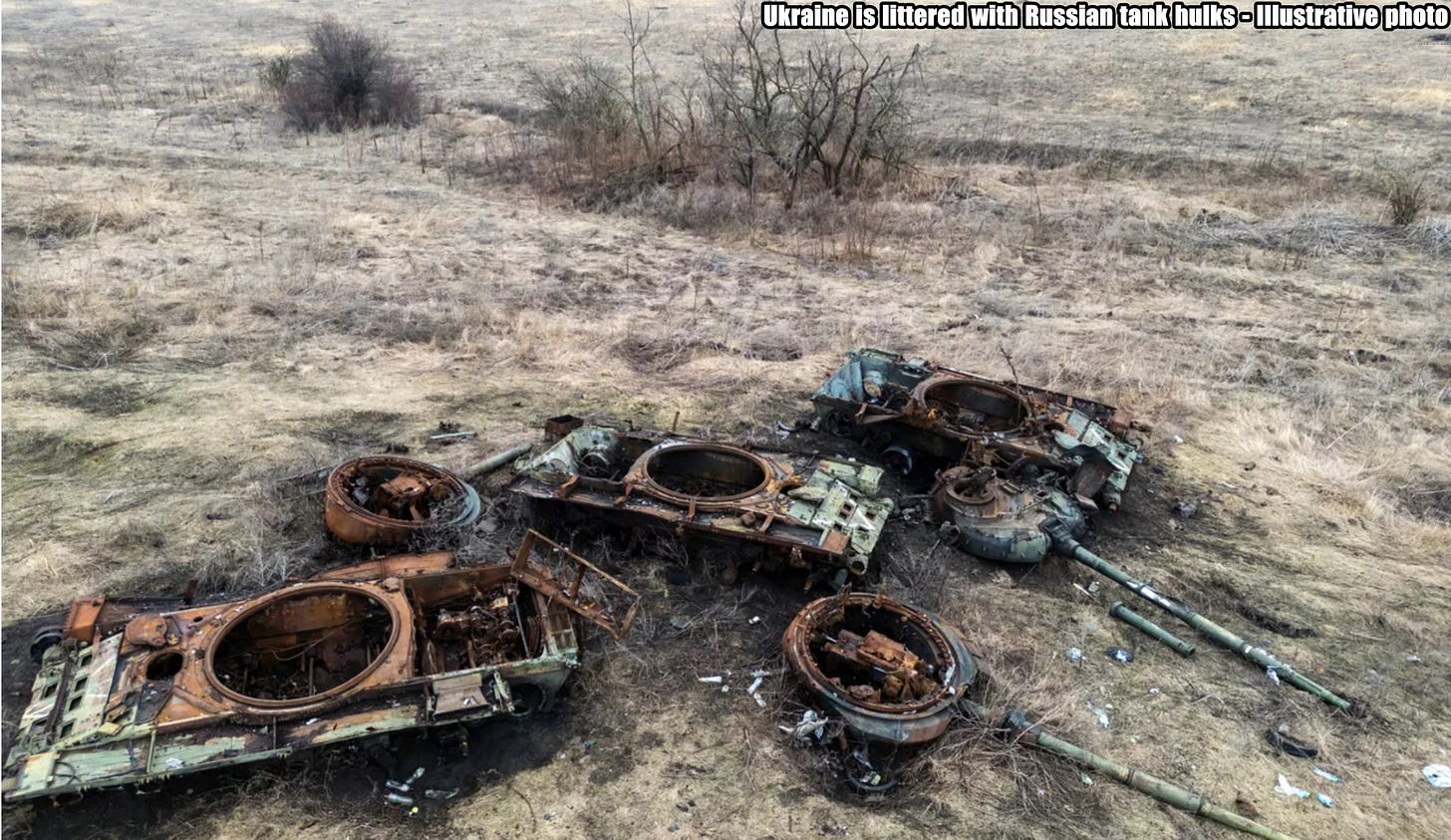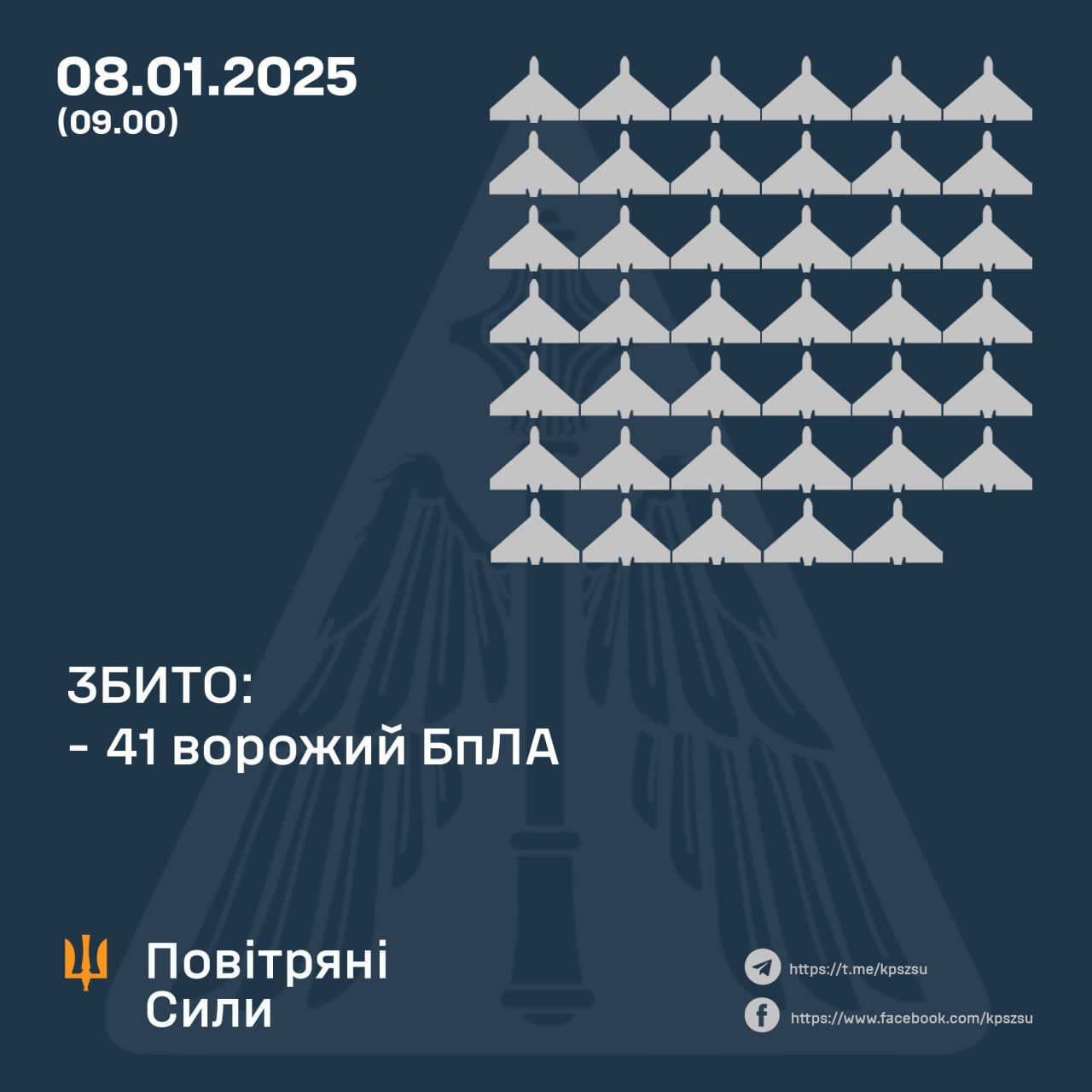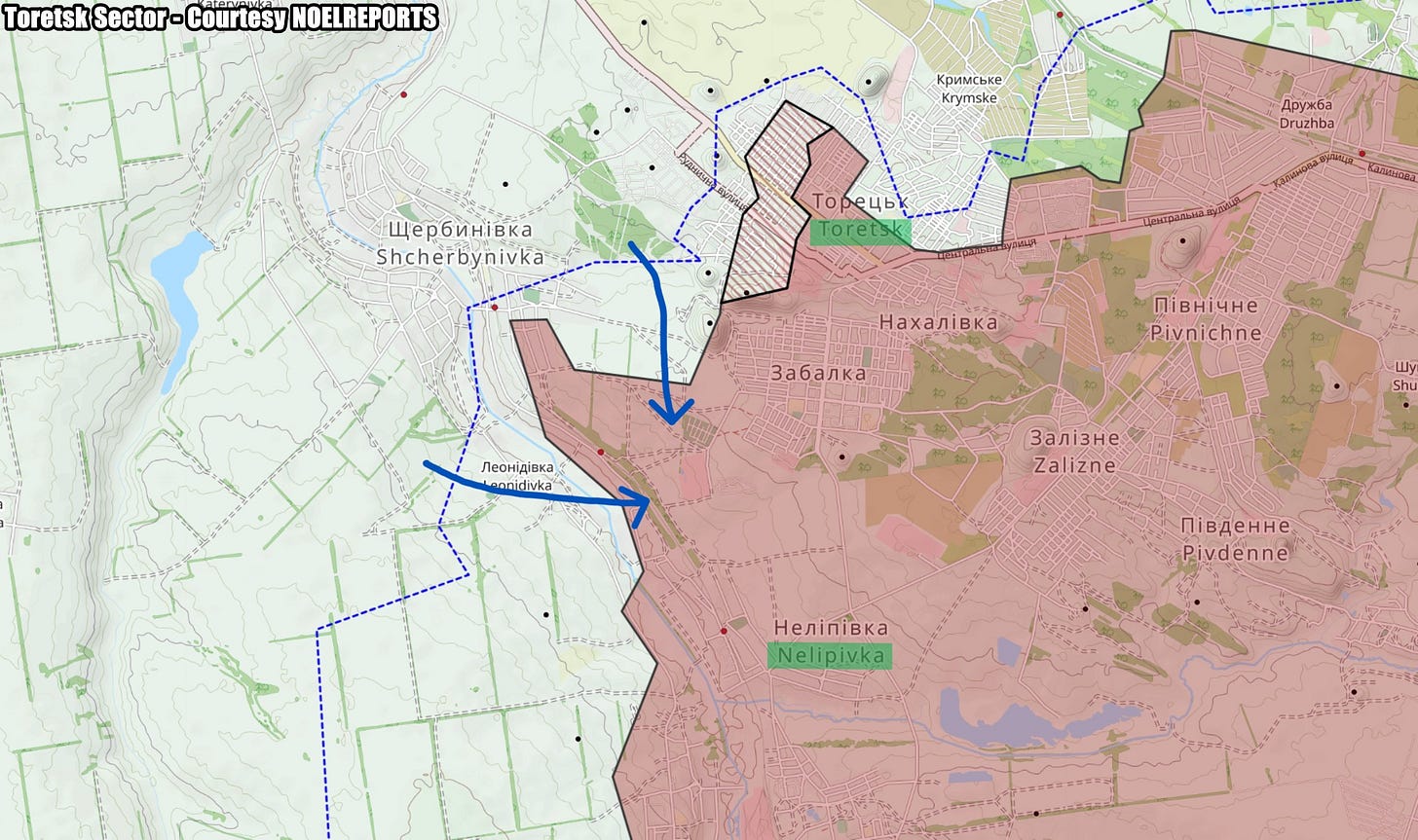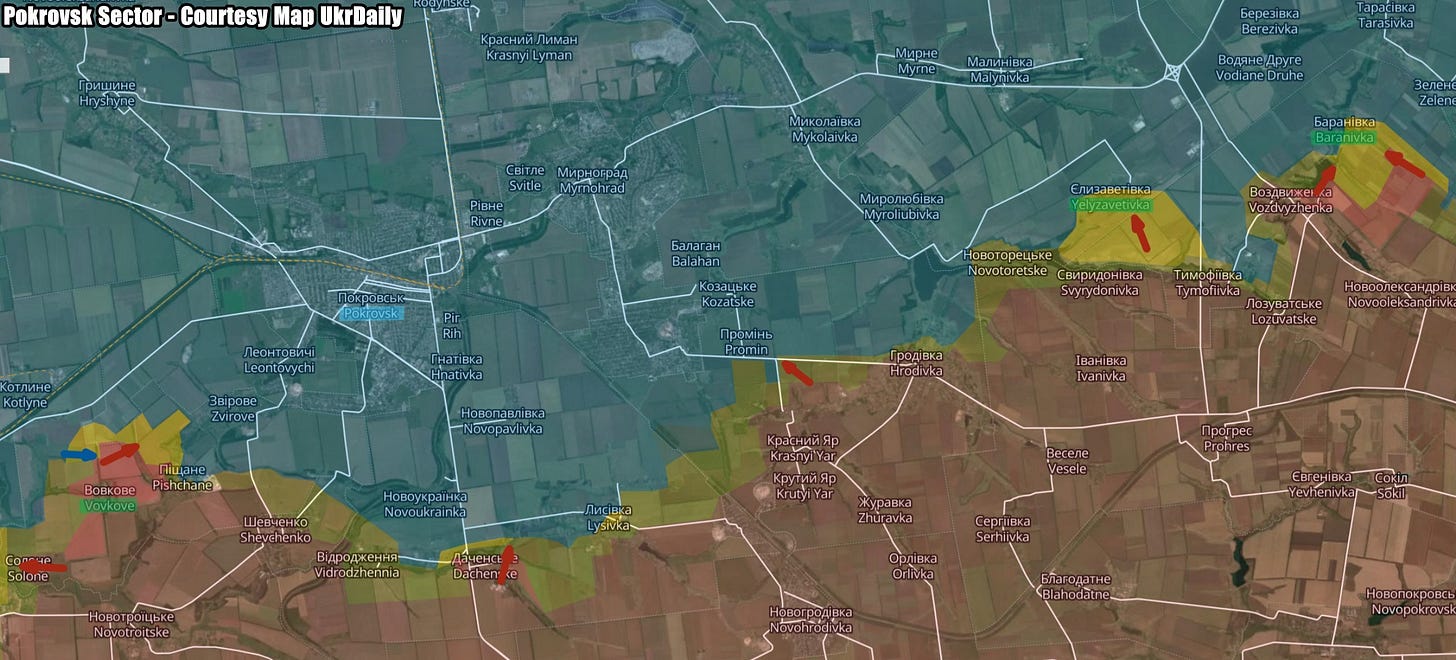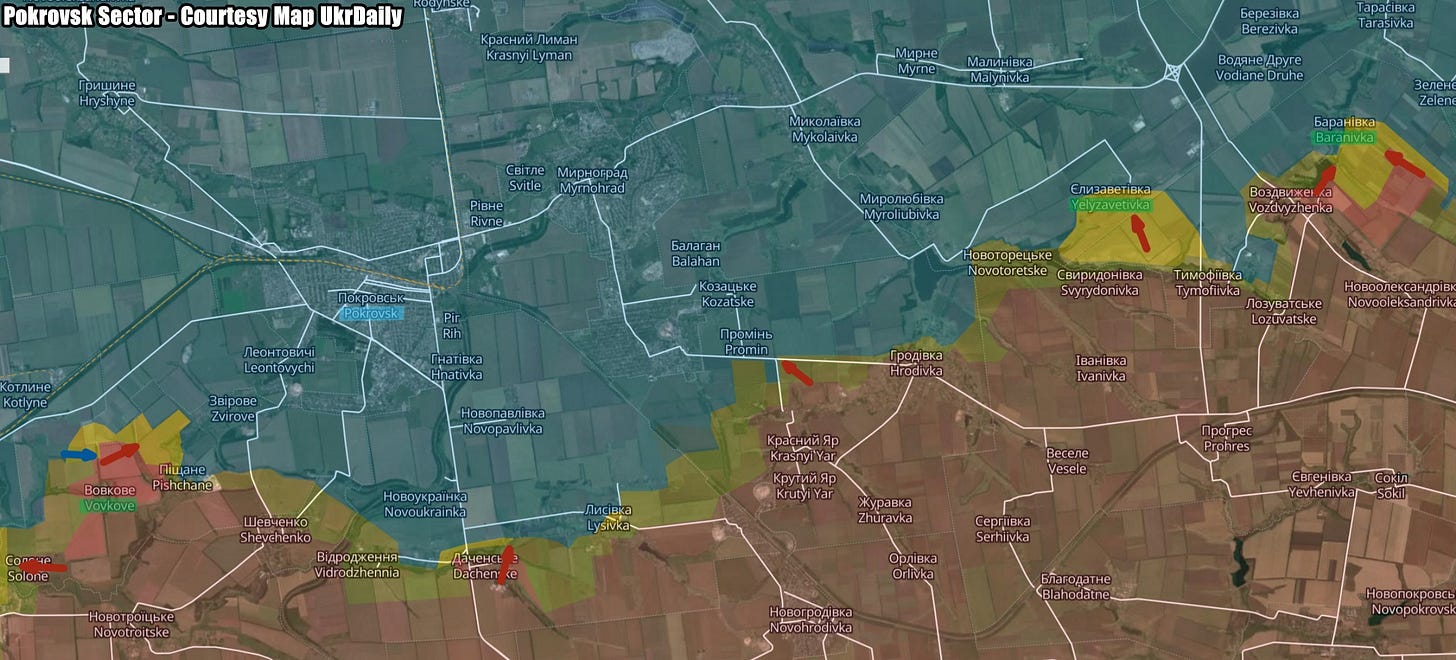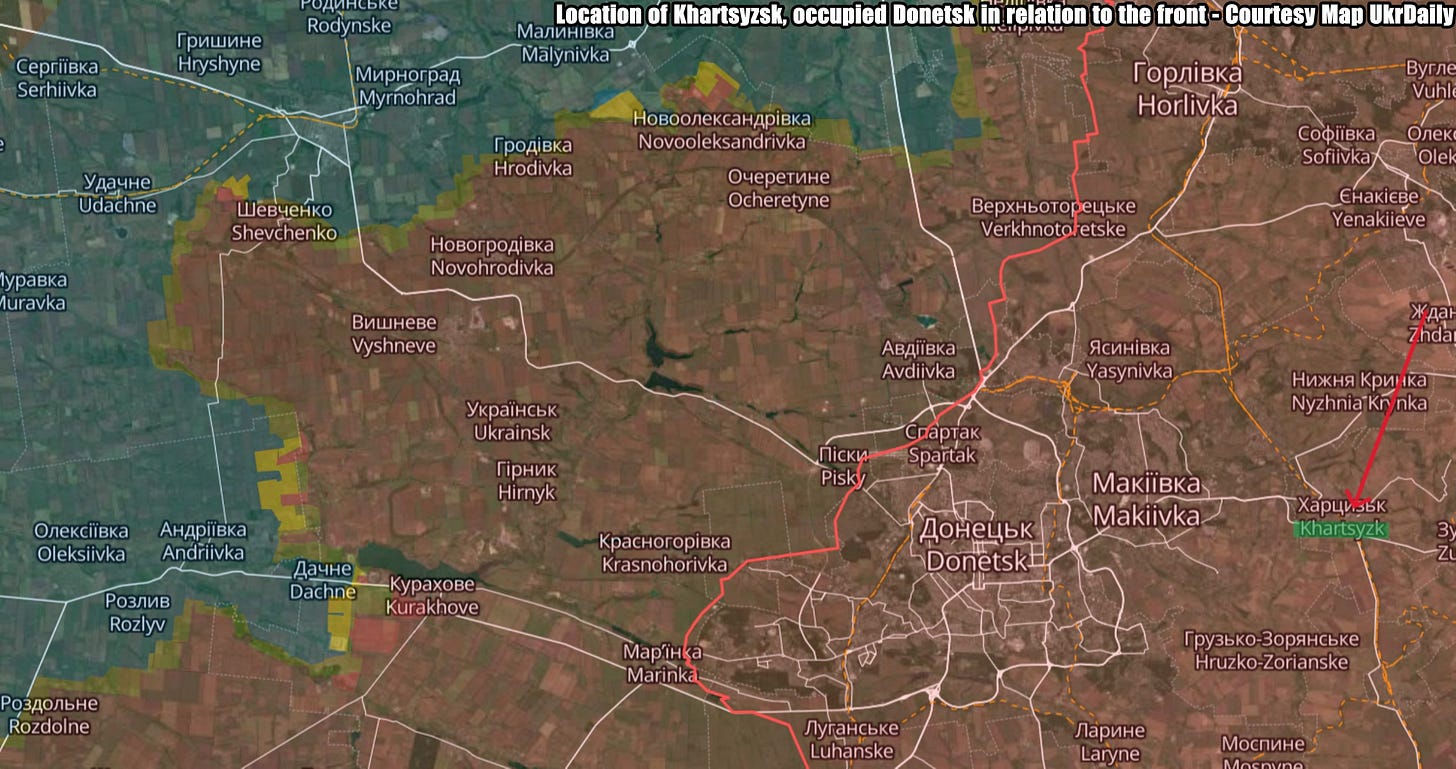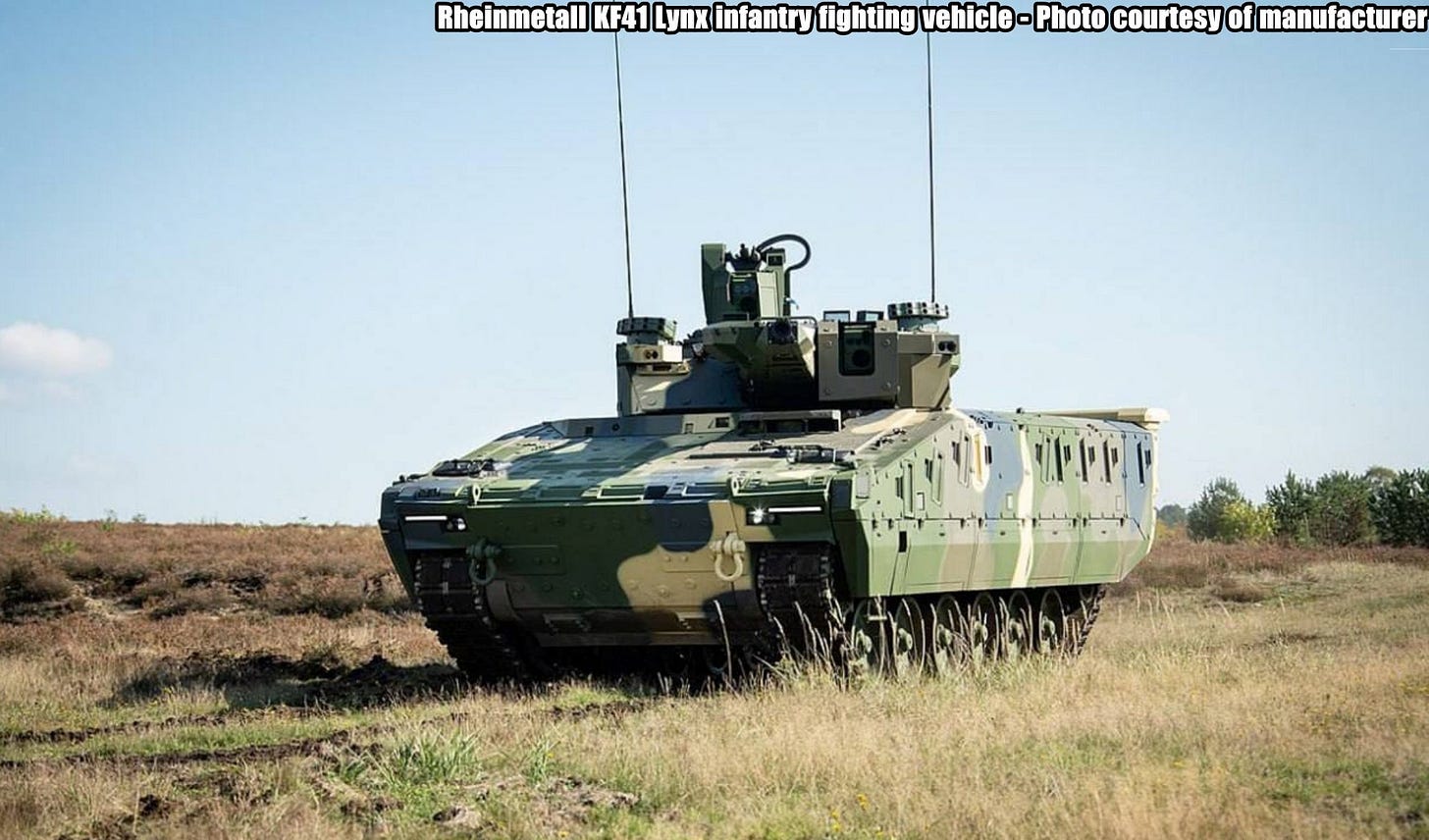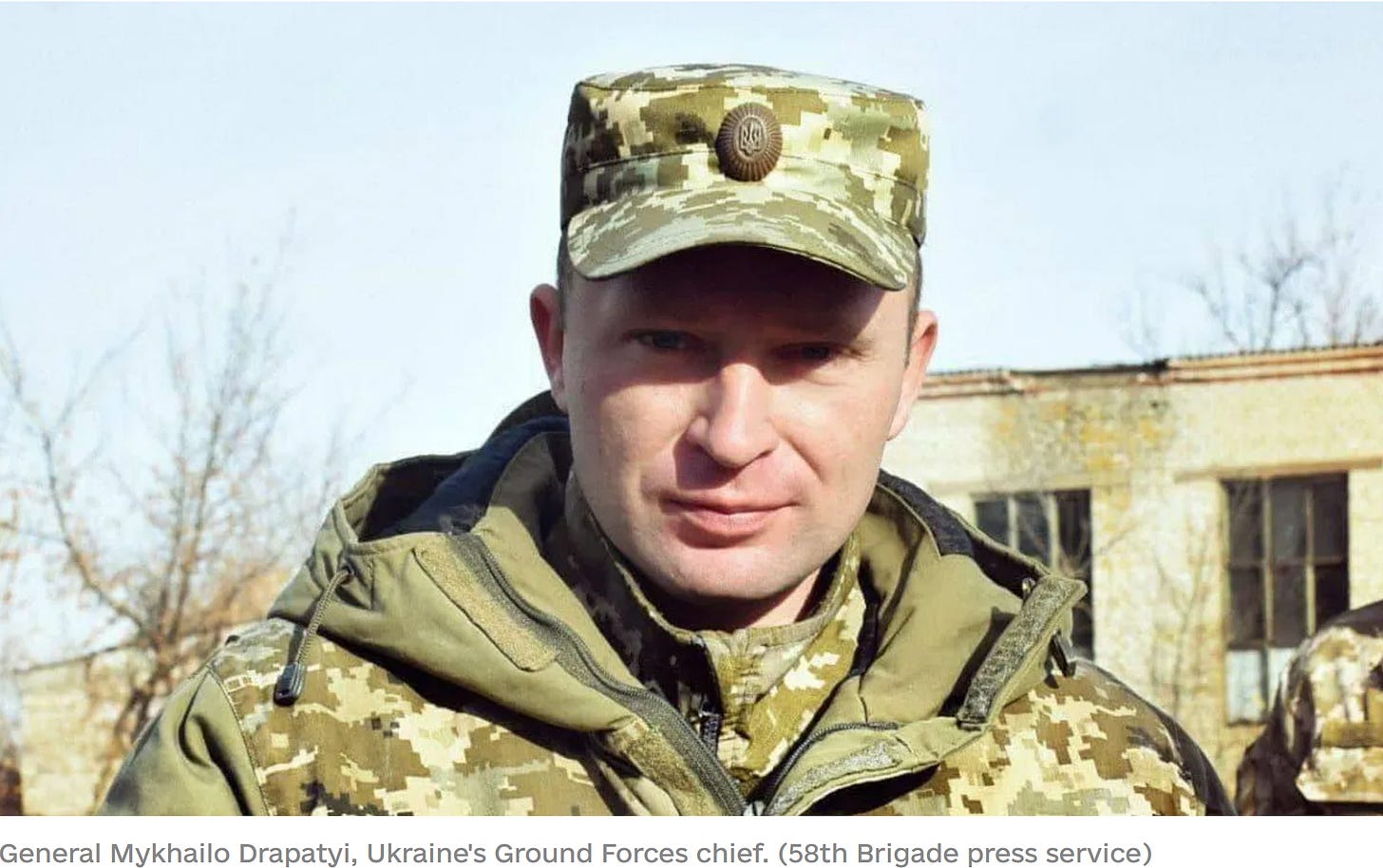Slava Ukraini! In early 2022 I began a Telegram channel aggregating news from a number of sources daily on the war in Ukraine. In June 2023 I began providing a daily draft for the Ukraine War Brief Podcast collecting news from over 70 sources daily, which formed the basis of the script. While the Podcast no longer exists I have continued to make this Brief available for my followers here on Substack for those who wish to keep up with the news from the war.
All the latest news on the Russo-Ukraine War 6 days per week
ALONG THE CONTACT LINE
GSAFU Morning Report
The General Staff of the Armed Forces of Ukraine in its Operational Information update at 08:00 on Jan 8 stated that day 1050 of the full-scale invasion of the Russian Federation against Ukraine had begun.
The situation on the line of combat remains tense in some sectors. Ukrainian defenders continue to actively counteract the Russian aggressor, causing them losses in personnel equipment and technology. Exhausting the enemy along the entire front line and continuing to disrupt the plans of Russian occupiers to advance deeper into the territory of Ukraine.
During the past day, 178 combat engagements took place. Over the past 24 hours, the enemy carried out 45 air strikes, used more than 2021 drones and more than 5,000 artillery strikes across the positions of Ukrainian forces and civilians.
Yesterday Russia passed another grim milestone in their ill advised invasion of Ukraine, with Russian forces having now suffered more than 800,000 casualties since the start of the full scale invasion, more than half of which occurred in 2024.
Air Force Daily Report
41 ENEMY UAVS SHOT, 22 DRONES FAILED TO REACH THEIR TARGETS (LOCATIONALLY LOST)
➖➖➖➖➖➖➖➖➖
On the night of January 8, 2025 (from 7:30 p.m. on January 7), the enemy attacked with 64 Shahed attack UAVs and simulator drones of various types from the directions of Orel, Kursk, Bryansk, Primorsko-Akhtarsk - Russia.
The air attack was repelled by aviation, anti-aircraft missile troops, electronic warfare units, and mobile fire groups of the Air Force and Defense Forces of Ukraine.
As of 09:00, the shooting down of the 41st Shahed attack UAV and other types of drones in Poltava, Sumy, Kharkiv, Cherkasy, Chernihiv, Zhytomyr, Dnipropetrovsk, Mykolaiv, and Kirovohrad regions was confirmed.
22 enemy drones-simulators were lost in location (without negative consequences), three of them flew towards Russia, one to Belarus.
The Russian Border Incursion
The Institute for the Study of War (ISW), a US based think tank, in its Jan 7 Russian Offensive Campaign Assessment reported that Russian forces recently regained positions in the main Ukrainian salient in Kursk Oblast amid continued offensive operations in the area on Jan 7. Geolocated footage published on Jan 6 and 7 indicates that Russian forces recently advanced in western Kruglenkoye, east of Leonidovo (both northwest of Sudzha), west of Staraya Sorochina, and northwest of Russkoye Porechnoye (both north of Sudzha). Russian milbloggers claimed that Russian forces seized Staraya Sorochina, Russkoye Porechnoye, Kositsa, Novosotnitsky, Berdin (all northeast of Sudzha), and Makhnovka (southeast of Sudzha). Russian mobloggers claimed that Russian forces advanced east of Sudzha in western Bondarevka; northeast of Sudzha in northern Nikolayevka, northeast and northwest of Martynovka, and southeast of Zelenyi Shlyakh; north of Sudzha in northern Cherkasskoye Porechnoye, in Malaya Loknya, and in southeastern Novaya Sorochina; northwest of Sudzha northwest of Sverdlikovo; and south of Sudzha in northern and southern Kurilovka and northeast of Kurilovka. ISW has not observed confirmation of these claims, however.
A Russian milblogger claimed that Russian forces are conducting an unprecedented number of aviation sorties in the Kursk direction.
Ukrainian forces recently advanced in their main salient in Kursk Oblast amid limited offensive operations in the area on January 7. Geolocated footage published on January 6 indicates that Ukrainian forces recently advanced in northern Pogrebki (northwest of Sudzha). A Russian milblogger claimed that Ukrainian forces hold positions in a contested "gray zone" near Berdin. A Russian source claimed on January 7 that Russian forces pushed Ukrainian forces out of Pogrebki. Russian sources claimed that Ukrainian forces unsuccessfully attacked in the Sudzha-Bolshoye Soldatskoye direction, towards Berdin, and near Cherkasskoye Porechnoye.
Ukraine's Special Operations Forces (SSO) stated on January 7 that Ukrainian forces killed 13 North Korean soldiers in Kursk Oblast.
The Khortytsia operational-strategic group
(Responsible for the northeastern part of Ukraine. )
Toretsk Sector: Below is analysis of the current status in this sector in two separate areas, from ISW and Frontline Report.
The Institute for the Study of War (ISW), a US based think tank, in its Jan 7 Russian Offensive Campaign Assessment reported that Russian forces recently advanced in northwestern Toretsk following several weeks of higher tempo Russian offensive operations and gains in the area. Geolocated footage published on January 6 indicates that Russian forces recently advanced along Kvitkova Street and reached the northwestern administrative boundary of Toretsk. A Russian milblogger claimed that Russian forces advanced along Pyrohova Street in northern Toretsk, but ISW has not observed confirmation of this claim.
Another Russian milblogger claimed that Russian forces occupy roughly 90 percent of Toretsk, but ISW has only observed geolocated footage to assess that Russian forces occupy approximately 71 percent of the settlement as of Jan 7.
Russian forces intensified offensive operations in the Toretsk direction in June 2024, likely to reduce the Ukrainian salient in the area and deny Ukrainian forces the ability to shell rear Russian areas in the Chasiv Yar and Pokrovsk directions, both of which were Russian main efforts at the time. Russian forces originally committed limited combat power, including elements of the Russian 51st Combined Arms Army (CAA) (formerly 1st Donetsk People's Republic Army Corps [DNR AC]), Territorial Troops, and some elements of the Central Military District [CMD], to intensified operations near Toretsk in June 2024. Russian forces have made creeping and grinding gains within Toretsk and the nearby settlements since June 2024 but have intensified offensive operations in recent weeks and made tactical gains within northern and northwestern Toretsk.
Russian forces appear to be shifting assault tactics in Toretsk in order to overwhelm Ukrainian forces and facilitate tactical gains within the settlement. A spokesperson of a Ukrainian brigade operating in the Toretsk direction reported on Jan 5 that Russian forces are now attacking in platoons of up to 20 soldiers after previously attacking in fireteams of roughly five personnel. A Russian milblogger claimed on January 7 that Russian forces had made recent gains in Toretsk by attacking in multiple areas at once instead of focusing attacks in one location. Russian forces are likely leveraging their superior manpower quantities to intensify offensive operations and advance within Toretsk.
Euromaidan Press Frontline Report stated that after recent Russian gains in and around the city of Toretsk, Azov Brigade reportedly conducted a decisive counterattack to the south west near Nelipivka on Jan 6 to exploit the disarray among the Russian forces. With Russian survivors left scattered and unsupported, the brigade to dismantle their positions and prevent any chance of renewed offensives.
The Tavria operational-strategic group
(Responsible for the central-eastern and southeastern part of Ukraine.)
Pokrovsk Sector : In this sector over the last day there were 38 combat engagements. Russian forces marginally advanced towards the villages of Baranivka and Yelyzavetivka Meanwhile Ukrainian forces counterattacked in the vicinity of Vovkove.
Kurakhove Sector: There were 17 combat engagements in this sector over the previous day, some of which were intense, however no measurable gain by either side.
The Odesa operational-strategic group
(Responsible for Kherson, Qırım, (also known as Crimea) and the Black Sea.)
Nothing major to report.
TEMPORARILY OCCUPIED TERRITORIES
AFU strikes at Russian command post in occupied Donetsk.
The Ukrainian Defense Forces struck at the command post of the Russian invaders in the occupied Khartsyzsk, Donetsk region, Censor.NET reports citing the press service of the General Staff.
"Today, the Ukrainian Armed Forces conducted a precision strike on the command post of the 8th Guards Combined Arms Army of the Russian Federation, located in the city of Khartsyzsk, Donetsk region.
The Russian occupation forces used this building to coordinate attacks against the Armed Forces of Ukraine and civilians, in particular the residents of Kurakhove. All necessary measures were taken to minimize the risks to civilians.
THE HOME FRONT
Almost 30 thousand Ukrainians have received status of missing since beginning of 2024
Almost 30,000 Ukrainians have received the status of missing since the beginning of 2024 - both military and civilians. Censor.NET reported citing the Commissioner for Persons Missing in Special Circumstances Artur Dobroserdov. Currently, the register of missing persons under special circumstances contains more than 71,000 entries. This includes both military and civilians. Since the beginning of 2024 alone, almost 30,000 people have received this status. Dobroserdov refused to disclose data on the military, as this is classified information.
"Once a month, we compile statistics on missing persons by region - at the place of registration of the missing person. According to the data as of the end of December 2024, Donetsk region is in the first place, followed by Dnipropetrovsk and Kharkiv regions," the Commissioner said
There are still 59,000 Ukrainians missing. Only 7,500 of them have been officially confirmed as prisoners of war by the International Committee of the Red Cross (ICRC).
As of 1 January 2025, the search for 9255 people has been terminated. Among them, 3923 have been located, meaning they are alive. Also, 5332 bodies have been identified.
In addition, the register collects information about unidentified bodies. There are currently more than 3,200 such records.
"Every month, and sometimes twice a month, bodies are repatriated. We transfer the bodies of the occupiers to Russia and receive the bodies of our defenders. This procedure takes place steadily, without major interruptions. Accordingly, certain search activities are taking place on the other side. They are returning the bodies. To date, we have managed to return 5,500 bodies," Dobroserdov said.
RUSSIAN WORLD
Putin is incapable of eliminating Ukraine’s bridgehead into Kursk.
A new offensive by Ukrainian defenders in the Kursk region of the Russian Federation proves that Russia is actually in a much weaker position than a year ago, and that Ukraine is not losing, Retired US General Ben Hodges said in an interview with Voice of America. Censor.net reports.
He is amazed that the Ukrainian Armed Forces have been holding the Kursk bridgehead since Aug 2024, and even managed to build up new military forces for a new offensive unnoticed by Russia.
"This tells me that the Ukrainian forces have become even more experienced and capable of using electronic warfare and what we call operational security," he said.
He also said that this offensive by Ukrainian troops also creates political pressure on Russian dictator Vladimir Putin, who "tried to ignore" the Ukrainian offensive in August and then twice said that he had to be removed by Oct 1 or Jan 1.
According to Hodges, the Ukrainian Armed Forces' offensive disrupts Russia's plans to retain the temporarily occupied Ukrainian territories during possible future negotiations.
"I don't think Russia would have agreed to Ukraine keeping part of the Kursk region. So, for me, it underscores the real brilliance of the Ukrainian general staff in launching this counteroffensive back in August," Hodges added.
He believes that Ukraine has thus gained an important lever of influence "at the most fundamental level."
Heating Failures Hit Russia's Far East Amid Subzero Temperatures
Thousands of people in the Far East city of Chita have been left without heating and hot water amid subzero winter temperatures following an accident at a local heating plant on Tuesday, the Moscow Times reports.
The leak at the Mashinostroitelny plant came as temperatures plunged to minus 20 degrees Celsius (minus 4 degrees Fahrenheit), the Chita.ru news website reported.
The Mashinostroitelny heating plant has been plagued by frequent breakdowns — the most recent occurring on Dec. 29 — and failed to obtain a winter-readiness certificate this year. In 2023, regional authorities noted that the plant's operations were hazardous and responsible for over 200 tons of harmful emissions.
Its owner, former Chita mayor and United Russia member Vladimir Zabelin, had promised residents that repairs would be carried out last winter. But in March 2024, he offered to sell the facility to the city administration for 107 million rubles ($1.2 million). The administration declined the offer, citing budget constraints.
Meanwhile, in the Far East republic of Sakha (Yakutia), residents of the Zhigansky district lost heating for six days amid temperatures of minus 50 C (minus 58 F) after a fire on New Year's Eve forced the shutdown of the district's central heating plant.
Temperatures inside some homes dropped to 5-7 C (minus 41-45 F), causing pipes and radiators to burst. Local shops quickly ran out of space heaters and blankets, the regional news outlet SakhaDay reported.
The Zhigansky district's heating plant is operated by a company headed by United Russia deputy Vitaly Chikachev.
Residents have called on Sakha's housing and public utilities minister to visit Zhigansk and declare a regional state of emergency. Local authorities in turn urged residents to stay calm amid the crisis and turned off the street lights to reduce the strain on the town’s electrical grid.
"We need to think about how our power plant can handle this load. After all, people are turning on more than one [electric] heater [in their homes]. So the issue is very serious. If, God forbid, something happens to the diesel power plant, then there's no need for war, we'll all freeze to death anyway," Margarita Nifontova, an assistant to the State Counselor of Sakha, quoted a local resident as saying in an audio message.
Utility failures are a regular occurrence in Russia due to aging infrastructure. In January 2024, thousands of residents across several regions endured days without heat, electricity or hot water amid freezing temperatures.
INTERNATIONAL NEWS
US lawmakers submit resolution labeling Russia's war in Ukraine genocide.
A draft resolution to recognize Russia’s war against Ukraine as genocidal was among the first bills submitted to the new U.S. Congress on Jan. 6., the Congress’ website showed.
The draft resolution was submitted by a bipartisan group of legislators, Ukraine’s Ambassador to the U.S. Oksana Markarova said in a Facebook post.
"Systematic actions against the Ukrainian people committed by Russian forces under the direction of Russian Federation political leadership meets one or more of the criteria under Article II of the Genocide Convention," the draft resolution’s preamble read.
The resolution cites the Russian military’s intentional targeting of civilians, civilian infrastructure, systematic sexual violence against Ukrainian women, men, and children, as well as the forced deportation of Ukrainian children to Russia.
"All crimes committed by the Russian Federation must be reflected in U.S. law to ensure that Russian criminals are punished and to prevent such heinous crimes in the future," the Ukrainian ambassador wrote in her post.
"Currently, the Prosecutor General's Office of Ukraine has opened 170,090 cases of crimes related to the aggression of the Russian Federation (151,698 for war crimes)," Markarova added.
The draft resolution calls on the U.S. to condemn Russia and support Ukraine and international jurisdiction against those responsible for Russia’s actions.
In early 2023, the International Criminal Court (ICC) issued arrest warrants for Russian President Vladimir Putin and Maria Lvova-Belova, the Russian official allegedly overseeing the forced deportations of Ukrainian children to Russia.
MILITARY & TECH
Ukraine receives first Lynx IFV from Rheinmetall.
At the end of 2024, the German defense company Rheinmetall handed over the latest KF41 Lynx infantry fighting vehicle to Ukraine. Censor.net reported on Jan 7.
This was reported by Rheinmetall CEO Armin Papperger to the Frankfurter Allgemeine Zeitung, Censor.NET reports.
According to him, the first Lynx IFV, which was delivered to Ukraine at the end of 2024, was manufactured by the Rheinmetall plant in the German community of Unterlüs.
"It is currently being tested by the armed forces there so that a serial order can be placed as soon as possible. We must continue to help Ukraine with the same energy," Papperger said.
The publication adds that the Ukrainian military has been trained in Germany in the maintenance and repair of military equipment, and a maintenance base was opened in western Ukraine in June.
The Lynx infantry fighting vehicle was developed by Rheinmetall. It was first introduced in 2018.
Its main armament is a LANCE turret with a 30- or 35-mm cannon and an anti-tank missile launcher, which can be equipped according to customer requirements. The crew is three people, and the troop carries up to nine soldiers.
The IFV is protected from 30-mm shells in the frontal projection and from 14.5-mm shells in the side projection. The bottom of the vehicle provides protection against an explosion equivalent to 10 kg of TNT. The IFV is powered by a 1470 horsepower Liebherr D9612 engine, which allows it to reach a speed of 70 km/h. The range on the road is 500 km.
French-trained brigade had 'systematic shortcomings,' Ukraine's top general reports to Zelenskyy
General Mykhailo Drapatyi, Ukraine's Ground Forces chief, reported to President Volodymyr Zelenskyy on the roots of the problems facing the French-trained 155th "Anne of Kyiv" Brigade and presented solutions, Drapatyi said on Jan. 8. The Kyiv Independent reports.
The general's remarks followed a media investigation that claimed soldiers of the unit, currently deployed near Pokrovsk, have suffered losses and gone AWOL (absent without leave) in large numbers due to poor command and organization within Ukraine’s military leadership.
"Most of the systemic shortcomings were committed by the Ground Forces Command, the General Staff of the Armed Forces of Ukraine, and the Operational Command," the commander wrote on social media. Drapatyi was appointed to lead the Ground Forces last November, months after the brigade was formed.
Without revealing all the details before "all the circumstances are established," Drapatyi acknowledged "inadequate management," "mistakes in recruitment," and "imperfect training planning" within the unit.
The commander said the biggest challenge was the "low efficiency and motivation of mid-level commanders who directly manage people."
Relevant solutions are already being implemented, with a focus on "recruiting experienced officers and commanders at all levels," the general said, adding that the 155th Brigade’s soldiers will receive additional training.
Service members of the unit will also be provided a hotline, the commander said.
"In addition to the official daily reports, I want to have direct contact and hear from the soldiers… how our decisions affect their motivation and the real state of affairs," he added. According to the general, the brigade also received psychologists to strengthen its cohesion while holding positions near Pokrovsk. "The French side has fully fulfilled its obligations to Ukraine," he stressed.
The 155th Brigade was intended to be a flagship project for Ukrainian brigades trained and armed with the assistance of foreign partners. French President Emmanuel Macron announced in June that France would provide training and military supplies as part of this initiative.
Despite Paris fulfilling its commitments for training and arms provision, an investigation led by Yurii Butusov, editor-in-chief of Ukrainian media outlet Censor.net, pointed to problems in the brigade's creation and management, allegedly leading to 1,700 cases of soldiers going AWOL from the unit before firing a shot.
Russia ramps up production of primitive home made assault vehicles.
Footage shared on social media reveals that the Russian military is increasing the production of makeshift, unarmed assault vehicles, informally referred to as "jihad mobiles," including one model based on the GAZ-66 utility truck. Defense Express reports.
Surely, similar improvised vehicles with no armament to fire back, such as armed Ural trucks or even all-terrain vehicles dubbed as "golf carts" by online users have been used in prior assaults on Ukrainian positions. So it might seem like a common practice at this point but there's a nuance.
Unlike those previous cases, this time, there's an evident deliberate effort to scale up the production of these primitive personnel carriers, even if it stems from private initiative rather than a centralized directive.
The growing reliance on these vehicles might be an indication that China has reduced its exports of Desertcross 1000 "battle golf carts" to russia. A bit more prosaic explanation would be that the high losses inflicted by Ukrainian forces have left the Russian military struggling with a shortage of armored vehicles. A shortage so severe that even vehicles based on unprotected GAZ-66 are now deemed viable options for assault operations.
According to consolidated data from the General Staff of the Armed Forces of Ukraine, the Russian military has already lost over 9,714 tanks and 20,205 armored vehicles in battles since February 2022. The figures make more sense when compared with pre-war inventory.
IISS global study The Military Balance 2022 estimated that russia’s armed forces had around 3,000 tanks and 11,000 armored vehicles in service at the time they launched the invasion of Ukraine. However, by the start of 2024, those numbers had dropped to 1,750 tanks and 9,000 armored vehicles, as recorded in last year's edition.
This context shows that when Russia draws and restores vehicles from dusted long-term storage arsenals or suddenly starts to be more economical in its expenditure of armored equipment, the immediate needs of the war in Ukraine might not be the only priority.
Another logic the Kremlin may be following is to preserve equipment for a potential larger confrontation with NATO. While saving operational tanks and vehicles and replacing them, where possible, the Russian military appears to be compensating for its equipment shortages with cheaper ad hoc vehicles on ordinary truck chassis and alike.
That’s it for today’s Brief folks if you would like to keep up with events in Ukraine daily please consider subscribing.





